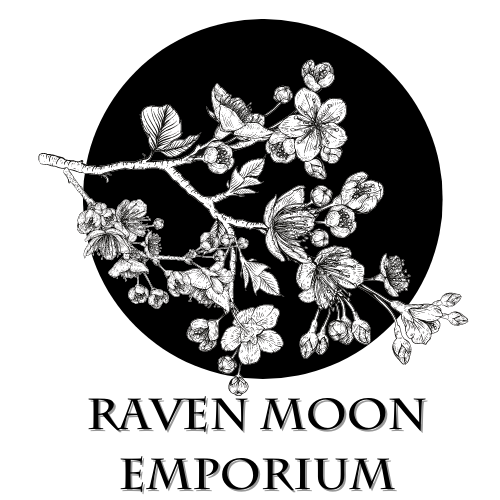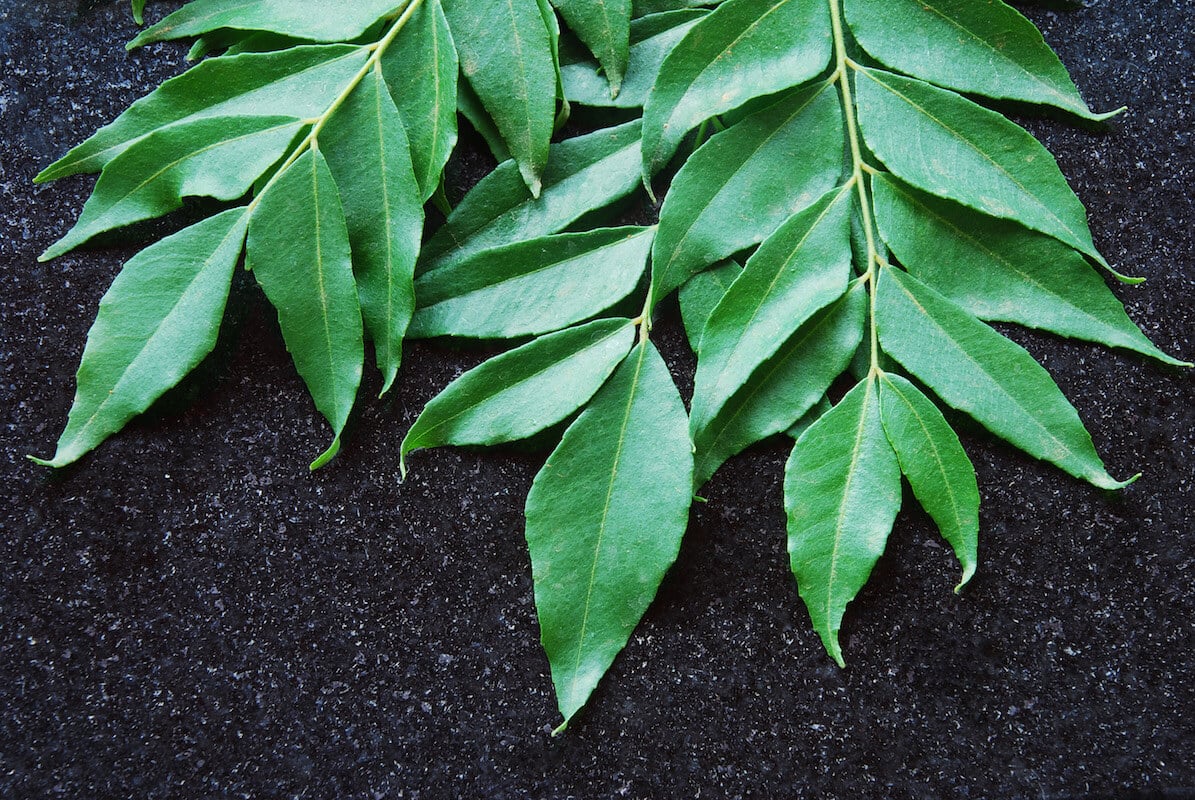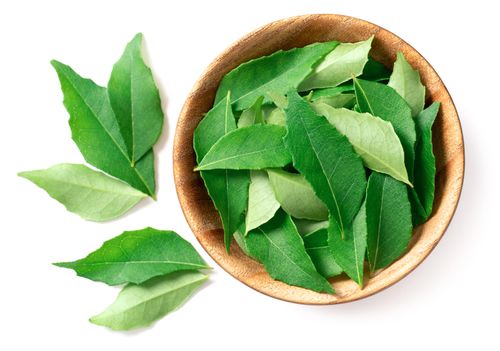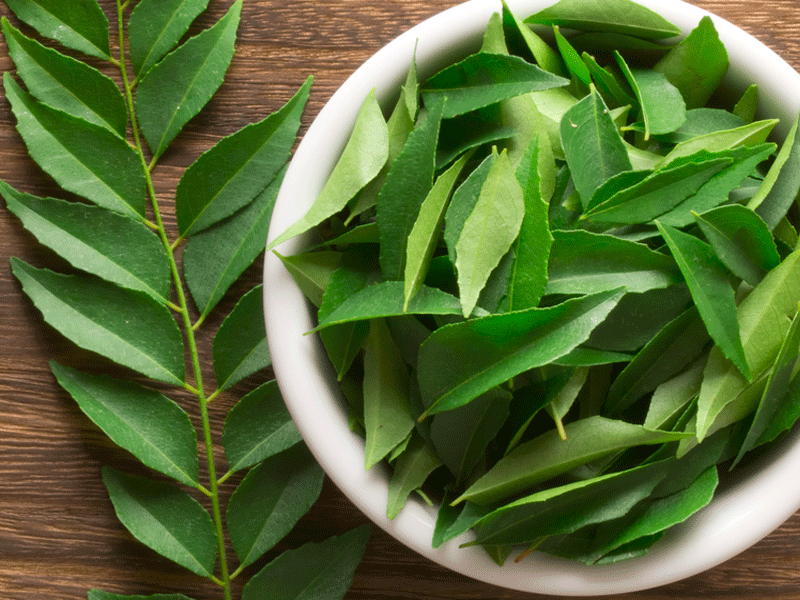The curry tree (Murraya koenigii) or curry leaf tree is a tropical to sub-tropical tree in the family Rutaceae (the rue family, which includes rue, citrus, and satinwood) and is native to India. Its leaves are used in many dishes in the Indian subcontinent. Often used in curries, the leaves are generally called “curry leaves,” although they are actually “sweet neem leaves” in most Indian languages.
Curry leaves are aromatic herbs used in South Indian cooking. The glossy leaves are vibrant green and teardrop-shaped, about one-and-a-half inches in length. These aromatic leaves have a lemon scent and a distinct, pungent taste that has been compared to anise and lemongrass.
 What are Curry Leaves?
What are Curry Leaves?
Let’s get this out of the way right off the bat: Curry leaves are an herb not related to curry powder. Curry powder is a blend of different spices which may or (far more likely) may not include curry leaves. In The Oxford Companion to Food, Alan Davidson writes of curry powder: “the kind sold commercially represents an attempt by the British manufactures to provide a ready-made form a spice mixture corresponding to those uses in South India.” Powder and leaves are not, in any way, a substitute for one another.
To add to the confusion, curry leaf plants and curry plants are different, too; if you’re looking to grow your curry leaves, the former is what you want. But, again, linguistic sticklers are advised: The curry leaf plant has pinnate leaves, so when a recipe calls for a certain number of curry leaves, it’s calling for said number of curry leaflets.
Curry leaves are a part of the same family as citrus fruits. Their glossy green leaves are very aromatic, and they have a unique flavor all their own. There is a citrus element, along with something else that’s hard to put your finger on—some say asafoetida and others anise. In her book Classic Indian Cooking, Julie Sahni describes the leaves as having “a bitterish taste and a sweetish, pungent aroma almost like lemon grass.”
They are unlike anything else in your spice rack, so it’s no surprise that Monica Bhide divides her life “into B.C. and A.C.—before curry leaves and after I first ate them” (and you just might, too). Curry leaf newbies take note: Some preparations will call for curry leaves to be removed from a dish, but it’s okay when they don’t—the leaves are entirely edible.
How to use Curry Leaves
It would be best always to bruise them a bit first, whether they are frozen or dyed. Curry leaves, which soften when cooked, are used to flavor rice, chutneys, soups, stews, and even dals. To bring out their flavors, it’s recommended that curry leaves be cooked in oil first. Then, you can add the sautéed leaves back in while the other ingredients are cooking. The main difference between dried and fresh curry leaves is that the fresh ones have a more potent aroma and more flavor than the dried ones. However, dried leaves are ideal to accent a dish instead of overpowering it.
On a cosmetic note, curry leaves are thought to be suitable for blemished skin and dry, damaged, or limp hair: you blend a good handful of the fresh leaves, heat them gently with some cosmetic oil, then massage into the skin or hair as necessary.
As with many other dark leafy greens, curry leaves are high in vitamin C and beta-carotene. In addition, modern medical research has found curry leaves effective in treating diabetes, colon cancer, and memory loss, according to studies cited in Healing Spices, a book written by Bharat B. Aggarwal, Ph.D., and Debora Yost.
 Lore of Curry Leaves
Lore of Curry Leaves
The usage of curry leaves in Indian and Sri Lankan cooking stretches back into the region’s ancient history. They are primarily used in areas with Indian influences on their culture. For example, South African and Malaysian immigrants carried curry leaves to those places. British merchants invented curry powder in the late 18th century. The blend of spices was intended to mimic the taste of authentic Indian curries. Some curry powder blends contain dried curry leaves. However, it is unlikely that the leaves have much influence on the flavor of curry powder since they lose their flavor soon after being dried.
Curry leaf’s uses are part of folklore. An often mentioned virtue of the leaves is that eating them helps hair grow and darkens the hair. A beauty recipe followed in homes across south India is adding curry leaves, pepper, cumin seeds, and a bit of rice to coconut oil. This is then heated and applied to hair regularly. Curry leaves are said to have anti-aging properties and are an excellent source of Vitamin A.
They have been part of the culinary vocabulary in India from the earliest times. In A Historical Dictionary of Indian Food, KT Achaya has described curry leaves as being used as a seasoning in south India centuries ago. He writes that “early Tamil literature notes the serving of a dish of the tender fruit of pomegranate cooked with butter and fragrant curry leaves.”
The 16th century Kannada literature records “an unfried brinjal bhaji, which contained coconut shreds, curry leaves and cardamoms, mixed well and flavoured with citrus juice and a little camphor.”
Curry leaves are mentioned in Ayurveda as well. Centuries later, some of its health benefits have been validated by scientists. Curry leaves (Murraya koenigii or Bergera koenigii) can benefit diabetes and heart patients. Researchers at three Indian universities—A P Department of Home Science, Bhilai Mahila Mahavidy-alaya, Raipur; G B Pant University of Research and Technology, Pantnagar; and the Department of Process and Food Engineering, College of Technology, Pantnagar—have found that curry leaves have several medicinal properties. These include anti-diabetic and cholesterol-reducing properties, antimicrobial activity, anti-ulcer activity, anti-oxidative property, cytotoxic activity, anti-diarrhea activity, and phagocytic activity.
Researchers at the Department of Pharmacy, King’s College London, have found scientific justification for the use of curry leaves as an alternative medicine to control diabetes. It is believed that the leaves may contain agents that slow down the rate of starch-to-glucose breakdown, thus, controlling the amount of glucose entering the bloodstream. In addition, researchers at the Department of Medical Chemistry at Mejio University in Japan think the leaves also have cancer-fighting properties.
The leaves also have a unique property that can make people move houses! This one is an old wives’ tale. They say the person who plants a curry tree in his house usually has to move houses sooner or later. The planting should be done by the person herself for it to come true.
There are two types of curry leaves sold under “Curry Leaf.” It would be fair to say that one of them is the authentic curry, and the other, an imitation that may smell or look like curry. Helichrysum italicum, sometimes listed as H. angustifolium, is the herb commonly sold as a curry plant by well-meaning nurseries and garden centers. It has a warm, curry-like fragrance but is bitter to the taste. More reputable plant sellers will tell you the plant is not edible and encourage you to grow the plant for use in potpourris and wreaths, but not for food.
Authentic curry seasoning is a blend of ground cumin, ginger, coriander, cinnamon, turmeric, red pepper, fenugreek, allspice, black pepper, cardamom, cloves, mustard, fennel, and mace. In that mix, ingredients, including mustard, cumin, coriander, fennel, and cinnamon, are roasted separately before being ground and added to the other ingredients. Curry is a complex seasoning that varies from region to region (nothing like the generic combination found in the grocery store), even from family to family throughout Southeast Asia. As a result, curry seasonings are often vastly different depending on the season. During the summer months, the seasoning is mixed with spices that cool the body, and in winter, a different blend helps keep the body warm.
One plant is correctly termed “curry,” which is the curry leaf plant. It’s a shrub or small tree, native to India and into the foothills of the Himalayas, eastward to Myanmar and southern China. Botanically, it’s Murraya koenigii and is easily grown in a pot indoors and moved outside in summer, in partial shade or filtered sun. It is the primary seasoning in the South Indian dosa, a crispy, thin, rolled pancake-like bread that is stuffed with several curry varieties.
To cook with the genuine curry leaf, which is generally used fresh but also has been used when dried, first heat ghee (clarified butter) or oil to almost smoking, toss in some garlic and roast it, along with some diced onion, then throw in six or eight curry leaflets (removed from the stem). The leaves immediately sizzle and pop, releasing their unique flavor into the oil. They can then be removed or left in the dish as the other ingredients are added.
Before cooking, fresh curry leaves won’t remind you of curry, but once the leaves are roasted in oil, the aroma and flavor change remarkably, and the taste is pleasant and delicious!
 Health benefits of curry leaves
Health benefits of curry leaves
Curry leaves have multiple health benefits. They have been used medicinally and as a flavoring for food. In addition, they contain a range of nutrients, including:
- Minerals: Curry leaves contain calcium, phosphorous, and iron. Calcium and phosphorous are both necessary for healthy bones and teeth. Phosphorus also helps with waste filtration in the kidneys. Red blood cells carry oxygen to the various tissues using iron.
- Vitamins: Curry leaves contain vitamins including vitamins C, A, and E. Vitamin C helps with healing wounds and the maintenance and repair of bones and teeth. Along with benefits for bones and teeth, vitamin A helps to promote good eyesight and skin health. Vitamin E helps with many of the body’s organs and is an antioxidant.
- Antioxidants: Antioxidants fight free radicals in the body. Free radicals harm cells, tissues, and organs. The antioxidants in curry leaves include vitamin E and carbazole alkaloids.
Curry leaves have been used throughout history to treat various conditions. They are considered suitable for treating diarrhea along with various other gastrointestinal problems. They are thought to have cancer-fighting benefits and can help with liver protection. In addition, studies have shown curry leaves to be effective for reducing the effects of the carcinogen dimethylhydrazine hydrochloride.


 What are Curry Leaves?
What are Curry Leaves? Lore of Curry Leaves
Lore of Curry Leaves Health benefits of curry leaves
Health benefits of curry leaves
